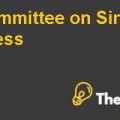
Liquidity risk
Liquidity risk refers to the risk when the organization faces difficulty in setting off its financial liabilities. Olam International is more susceptible to liquidity risk because the commodity purchased by the organization is very expensive and the organization will require sufficient working capital to pay off its suppliers in accordance with contractual obligations. Further, the liquidity risk management is particularly very important because if the group pays its suppliers on time, then it will be able to maintain strong relations with suppliers and the group can even demand high discounts and request their suppliers to extend the credit terms.
In order to manage the liquidity risk, Olam International adopts short-term bank facilities which are usually transaction-linked and self liquidation in nature. Further, the group also provides multi-currency, medium-term notes programme and term loans from the financial institutions in order to manage the overall working capital requirement and the future growth needs of the organization. Further, in order to increase funds of the organization the group appropriately manages the overall working capital cycle of the organization by matching the payment of suppliers with the amounts expected to be realized on sales (Pastor, 2003, 665).
The strategies adopted by Olam International in order to manage its liquidity risk will increase the working capital of the organization which will facilitate the group to pay off its creditors on time; this will enhance the relations with the suppliers and an opportunity for the group to demand higher discounts on commodity which will ultimately reduce the cost and increase the overall profitability of the organization. Further, proper management of liquidity problem will align the group’s objective of satisfying its stakeholders by providing them on time payments and achieving the long-term sustainability (Bhaduri, 2007, 14).
On the other hand, the strategies adopted by management in order to manage the liquidity risk will raise some problems as well. Firstly, the organization will have to suffer increased finance and admin cost on short-term bank loan or overdraft. Secondly, the overdraft facility by the bank requires the group to repay the overdraft amount on demand, which will further threaten the liquidity position of the group. Further, the interest cover ratio of the group will decrease which will dissatisfy the bond holds and can also threaten the credit rating of the group. A down wards credit rating will decrease the confidence of bond holders and will also require the group to raise further finance at relatively higher rates. Moreover, it will also deteriorate the capital structure of the group.
Another important drawback of short-term loan is that the interest rates are comparatively higher as compared to interest rate on long-term loans, which requires the group to suffer additional financial cost; hence decreasing profits and low funds will be available to the group for its distribution to shareholders. Further, the loans are also susceptible to market fluctuations due to fixed or floating bank rates, which depends on the terms agreed with the bank. (Ludwig, 2006, 42).
Interest rate risk
Interest rate risk is the risk that arises from the fluctuation of interest rates in the market. Olam International is more susceptible to interest risk because a large portion of debts includes interest bearing liabilities and such risk also increases where the interest rate agreed with the bank depends on floating rate, so the group may bear risk of changes in market fluctuations as well. Further, adverse interest rate will increase the finance cost of the group, which will ultimately reduce the operating profits of the group for its distribution to shareholders.
Further, adverse interest rates will reduce the interest cover ratio of the group, which will deteriorate the credit rating as well. Such strategy will dissatisfy the debt holders because debt holders are very much concerned about the recovery of the funds, adverse credit rating will threaten their confidence and may increase the need for the group to borrow further funds at relatively higher interest rate (Rajna, 1999, 52).
Olam International is susceptible to interest risk because the group operates in a very complex environment and the commodity bought by the group is relatively very expensive which raises heavy need for working capital, so the group uses short and long term borrowings in order to satisfy its working capital requirement, which increases the risk for the group to suffer adverse fluctuations in interest rates
Olam International manages its interest rate risk through hedging the risk using different interest rate derivates, which has a primary objective to limit the interest rate exposure which could have a negative impact on fluctuations in interest rate.......................................
This is just a sample partial case solution. Please place the order on the website to order your own originally done case solution.












